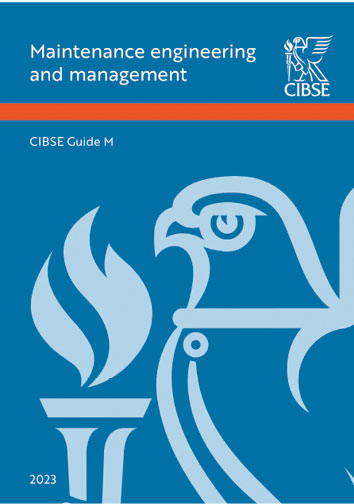The pace of change in the facilities management world is rapid. Driven by legislation, technology, rising energy prices and the need to ensure occupant safety in the response to the COVID-19 pandemic and the Grenfell Tower fire, reform is happening in almost every area.
To help facilities managers adapt and thrive in this fast-evolving world, I led a group of volunteers from CIBSE’s Facilities Management Group to update CIBSE Guide M.
Often referred to as the ‘maintenance bible’, CIBSE Guide M: Maintenance engineering and management is written specifically for facilities managers, designers and building owners and operators. The guidance includes all the information needed to successfully operate a building’s services, while ensuring buildings are safe and healthy and optimised for energy performance.
The Guide is written to provide a general overview of the many topics and issues of which facilities managers need to be aware. Each of the Guide’s 16 parts incorporates a detailed list of references to provide more in-depth and comprehensive information on specific topics.
This latest revision of Guide M has been published to provide guidance on the many areas of change since the Guide was last amended in 2014.
One of the biggest of these has been to the duties of facilities managers when commissioning or managing any form of building work, due to the fundamental changes to the Building Regulations that came into force on 1st October 2023 and imposing new statutory duties on clients.
The legislation also imposes major new requirements on facilities managers working in the residential sector on higher risk buildings in particular.
The Guide’s chapter on Legislation now includes a section outlining the requirements of the Building Safety Act and explains the implications of the “in occupation” provisions for higher risk buildings.
 Changes to the Building Regulations introduced under the Act also impose new dutyholder and competence requirements; these too are covered in more detail.
Changes to the Building Regulations introduced under the Act also impose new dutyholder and competence requirements; these too are covered in more detail.
In addition, a new facilities managers’ guide to handover information has now been included in Part 7: Handover procedures, which will be helpful when dealing with the ‘golden thread’ of safety information for higher risk buildings.
THE LONG TAIL OF COVID
The COVID pandemic was another major event to impact the built environment. The pandemic changed the way people use offices, in particular the introduction of agile working patterns and recognition that workers are no longer tied to a particular desk or even office building.
More generally, wellbeing has become an increasingly important topic since COVID.
Earlier versions of Guide M lacked guidance on infection control, lighting and daylight, water quality, noise and vibration, and electric and magnetic fields. All these issues influence the perception of comfort and can have an impact on occupant health.
The revised wellbeing section now addresses indoor air quality and explains how carbon dioxide levels have gained prominence as a proxy for the control of ventilation rates.
This amendment also expands the scope of Guide M to give guidance on aspects of the Well Building Standard and other assessment schemes.
FOCUS ON CONTROLS
The controls part has had to be almost completely rewritten to reflect developments in technology, the increased demand for ‘smart’ buildings and the growth of the Internet of Things.
Controls are critical in supporting the management of facilities and this chapter now includes current best practice from the Building Controls Industry Association. There is also advice on dealing with legacy systems, upgrading control systems and the importance of cyber security.
Similarly, the energy efficiency and maintenance chapter has also been completely overhauled to reflect the rapid increase in the cost of energy and the drive to net zero carbon.
The Guide explains that to achieve energy and carbon reduction targets the facilities management team will need to move its focus beyond that of keeping the building and its plant in good working order to being able to comment on the scope for varying system operations to match building usage patterns. It also explains what constitutes an effective energy management policy, what is required from an energy management system, and it now also includes advice on low carbon and renewable systems.
INDICATIVE ECONOMIC LIFE
Guide M is still the only industry source with a comprehensive list of the indicative economic life for the various engineering assets likely to be under the remit of the facility manager. The updated economic life expectancy table and its variation factors are derived from cross-sector user experiences of typical assets and equipment.
Illustrative examples are provided to show the use of these factors, which the Guide says is “subjective” and “relies on assessment by experienced engineers”. Nevertheless, the method does provide a logical approach for estimating purposes.
Other areas updated under this comprehensive revision of Guide M include guidance around the mobilisation of contracts This now includes a comprehensive  list of items that need to be discussed and agreed during mobilisation to ensure a good working relationship from the outset. There are also updates to the contracts section that now include guidance on the procurement process.
list of items that need to be discussed and agreed during mobilisation to ensure a good working relationship from the outset. There are also updates to the contracts section that now include guidance on the procurement process.
In association with www.cibse.org





